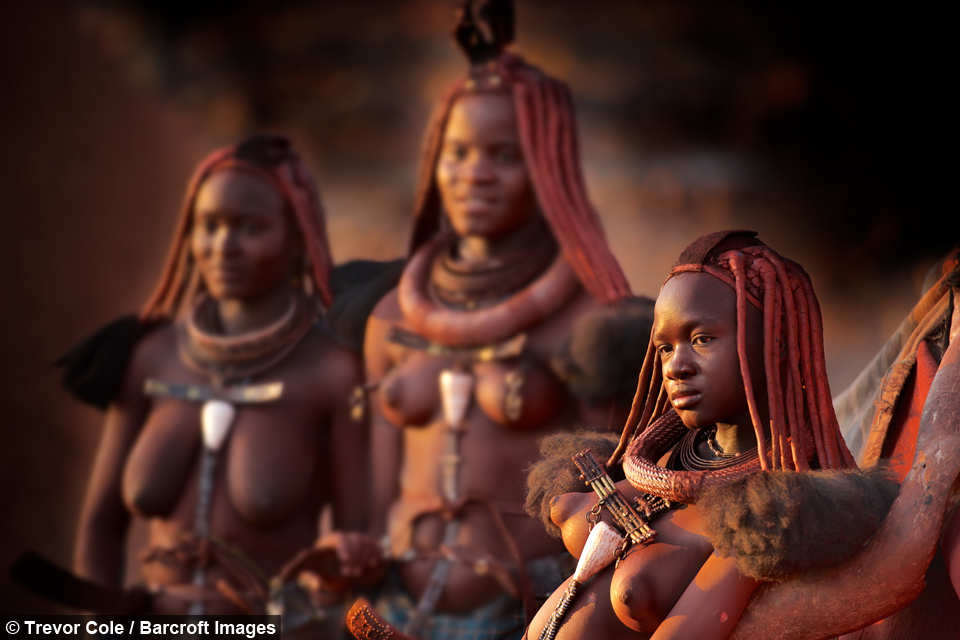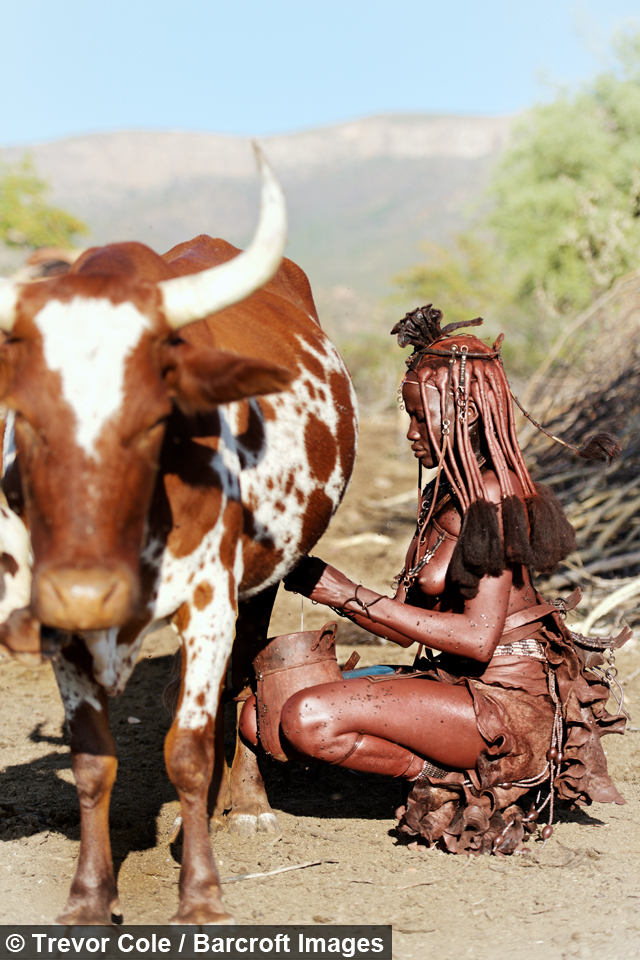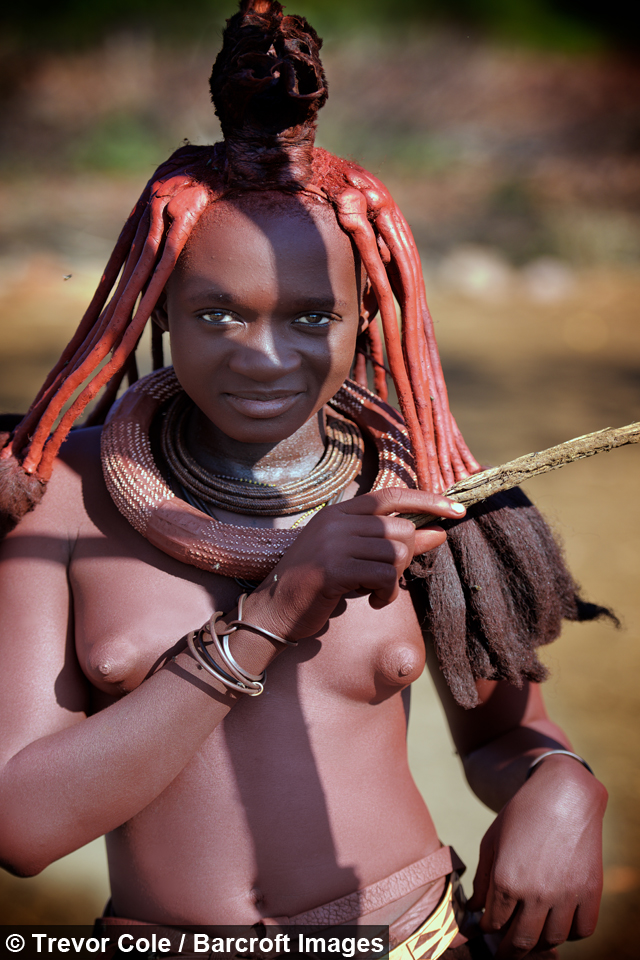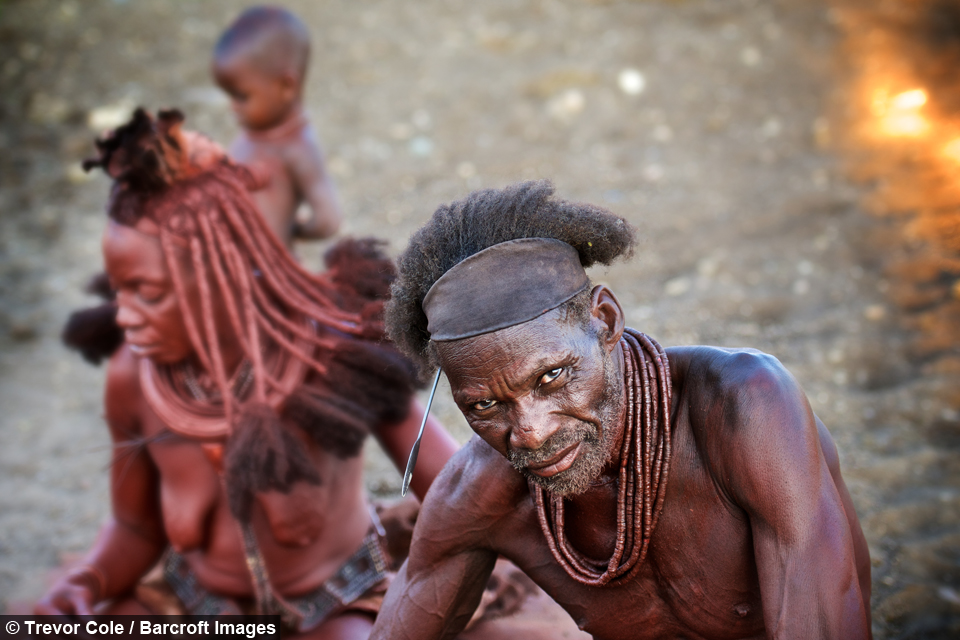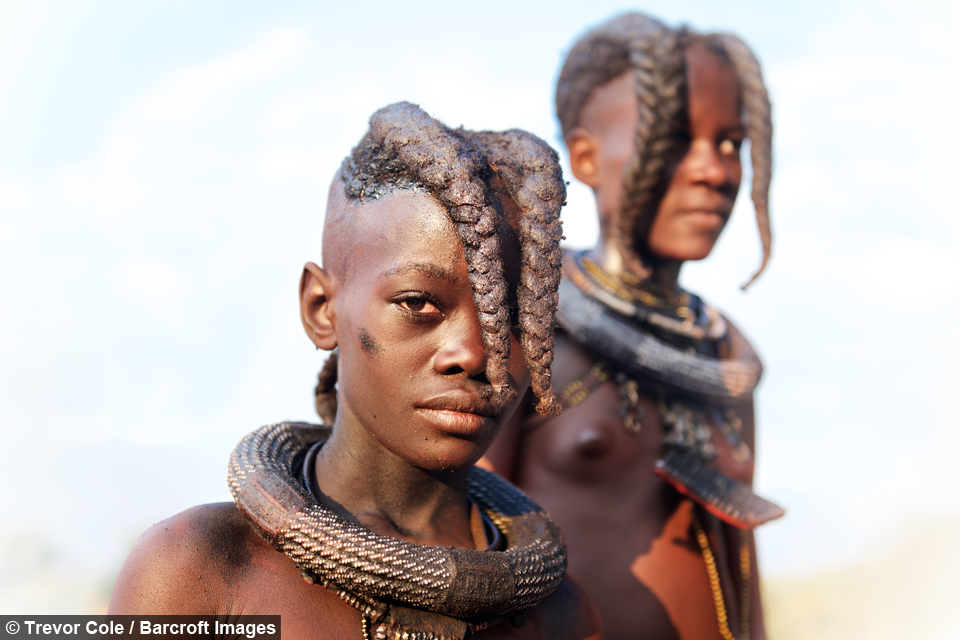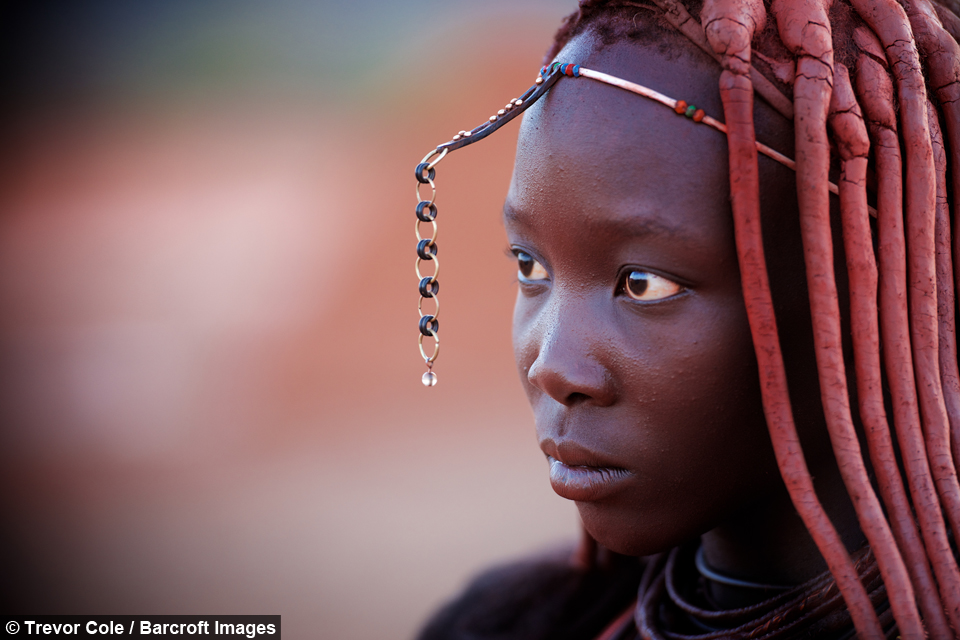Isolated Himba Tribe resists rising tide of tourism
By Hannah Stevens @Hannahshewans
Scroll down for the full story
Travelling photographer Trevor Cole sought out the isolated Ovahimba to capture their unwavering traditions, including their red ochre dyed hair and intricate jewellery.
Despite the widening reach of the modern world, the Himba have remained secluded and they are protected from overexposure by strict government guidelines on visiting the tribe.
Trevor said: “Whilst in this region I visited several villages and was surprised at the degree of resilience in the face of homogenisation and the impact of tourism.
“I think the cultural resilience has come about partly due to isolation but also pride in their culture. The government also has strict rules about visiting the tribe and is sensitive to their needs.
“Tourism is encouraged but it is mandatory to give something of use on each visit, mainly food such as flour or salt.
“This is especially important during years when there is drought as they live in a very arid climatic zone.”
Alongside the Himba’s strong connection to their cultural heritage, Namibia’s sparse population of two and a half million has protected them from becoming a major tourist attraction.
The Himba are mostly settled in Kaokoland in the remote Kunene region and number between 20,000 and 50,000.
Although a few of the young boys wear t-shirts, there is little westernisation among the Himba people and they dress in leathers.
Himba women are bare breasted and braid their hair and veneer each one with clay and red ochre made from ferruginous soils when they reach puberty - they use the same mixture to paint their bodies red.
Trevor said: “The red colouration is derived from butter fat and ochre and it is used to protect their skin from the sun.
“The Himba believe that this colouration is beautiful and symbolises the red of the earth and blood.
While pre-pubescent girls maintain their hair in two simple braids, single Himba men have one braid and keep their hair tied back when married.
The Ireland-born photographer continued: “They also wear bracelets on their arms and legs and have lines on the leg bracelets to indicate that they have two children. If they have more the rest of the children are not symbolised in this way.”
“If women mourn the loss of someone in the family one of the leg bracelets is shortened and they may also wear a leather crown if they have lost their husband.
“This leather crown is worn for marriage and not again until there is death. The Himba are a patriarchal and polygamous tribe and men may have several wives.”
Himba are nomadic pastoralists and migrate seasonally from a central or ‘home’ village to villages that provide better grazing for their animals.
The women’s roles include raising the children and milking the cattle at dawn each day, while the men are rarely in the village as they spend their days herding the animals.
Traditionally, women wear simple leather loin clothes and do not wash themselves, choosing to use aromatic plants and resins instead.
Trevor added: “I enjoy the simplicity and harmony which is seen amongst these tribal groups. They lively simply, work together and are sensitive to environmental needs.
“They deserve the right to determine their own futures and not to be homogenised or changed by deliberate acculturation.
“They have their own inimitable beauty and take pride in their cultural roots.”
